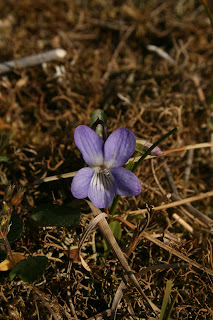It's not The Beatles but butterflies and flowers that have come out in the sun and warm weather.
Flowers are starting to emerge in greater numbers with Common Bird'-foot-trefoil and Sea Pea appearing on the shingle ridge. Sea Pea was introduced by Ted Ellis in 1954. More Thrift flowers have also started to emerge creating a pink haze along the shingle.
Thrift (left), Common Bird's-foot-trefoil (right)
We had our first butterfly on our butterfly transect yesterday! With our transect today amassing the most we have had with 10 butterflies, the majority of which were Small Coppers. Although a total of 6 different species have been seen today including the first Orange Tip and Wall.
Small Copper
We also have our first Black-headed Gull chicks of the year. With some only just breaking through the egg shell to emerge.
Sitting outside the Lifeboat House in the evening has given us good views of waders at high tide including 150+ Ringed Plovers. These birds are migrants and are only stopping off to feed on their way back to breeding grounds in the tundra. We also were lucky enough to have good views of two Little Stints in summer plumage as well as 2 Curlew Sandpipers.
Migrant Ringed Plovers
Saturday's low tide seal count on the West Sands recorded 616 Grey Seals and 65 Commons. We continue to have daily Short-eared Owl sightings near the Lifeboat House, over the weekend there was also a Black Redstart. Other notable bird sightings include Spoonbill on Saturday and Sunday and a Honey Buzzard and Hobby today.
Grey Seal
With the warm and sunny weather over the last two days, me and Ajay decided to go for the first swim in the sea of the year. One word to describe it is refreshing, another and more poignant one is probably freezing! Still it was good fun.

































